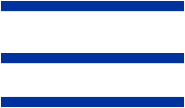Turn Copper Alloys into Stainless Steel with Steel-It®!
 Corrosion darkens, then blackens, then greens a bright mint-red copper surface, not only defacing but in many cases also eroding the copper alloy. So? Steel-It® anticorrosive protective spray-on coatings for copper and all its alloys allow you, easily and affordably, to convert any copper surface to a guaranteed industrial-strength, hard, durable, non-corrodible, heat, abrasion and chemical agent resistant, long lasting, 316L stainless steel finish. If you use the contact form on the left today to let us know your industrial copper protection needs, we will promptly refer you to the product that meets them best.
Corrosion darkens, then blackens, then greens a bright mint-red copper surface, not only defacing but in many cases also eroding the copper alloy. So? Steel-It® anticorrosive protective spray-on coatings for copper and all its alloys allow you, easily and affordably, to convert any copper surface to a guaranteed industrial-strength, hard, durable, non-corrodible, heat, abrasion and chemical agent resistant, long lasting, 316L stainless steel finish. If you use the contact form on the left today to let us know your industrial copper protection needs, we will promptly refer you to the product that meets them best.
Copper and Brass Corrosion Prevention
Unalloyed copper (Cu) is a chemically reactive and corrosion-prone metal that oxidizes when exposed to air. In plain water, copper forms a natural resistant layer of copper oxides, a so-called passivation layer. Copper corrodes slowly in clean air and water and shows good resistance to certain acids(non-oxidizing, de-aerated acids). The high-copper alloys (C 10100–C 19600 and C 80100– C 82800) face corrosion challenges similar to those of pure copper. As a gentle metal, copper is vulnerable to pitting corrosion. Other, lower-copper alloys show good endurance against a range saline and alkaline solutions and organic chemical agents. Various copper alloys are industrially attractive for their ease of fabrication, thermal and electrical conductivity, joinability, moldability, workability, machinability, special mechanical properties, and resistance to certain chemicals and seawater.
Even so, the corrosion of copper accelerates dramatically in the presence of oxidizing acids, heavy-metal salts, cyanides, and/or of sulfur, ammonia, or their compounds. Corrosion can likewise escalate in certain “cuprosolvent” waters, typically rich in CO2, which are often sourced from private borehole supplies.(The high CO2 concentration tends to lower water’s pH to levels below pH 6.5, causing copper to dissolve.) Additionally, the coupling of copper alloys with aluminum or steel frequently cause fast and extreme galvanic corrosion.
Copper’s alloy with zinc is brass. The brasses (C 20500 – C 28580) have numerous industrial applications, but they are not without their own corrosion issues. Low-zinc (under 15%), high-copper brasses display pretty much the same resistance to waterborne solutions as unalloyed coppers. In high-zinc brasses, however, such exposure is likely to result in the brass’s dezincification, degrading the alloy.
In most corrosive contexts, Steel-It® coating systems come securely to the rescue. They form an extremely tough layer of microscopic 316L steel flakes that hang on tight to the protected surface. Coated with Steel-It, a metal structure becomes, for many practical purposes, virtually indistinguishable from stainless steel (except for the latter’s disadvantages, such as great cost and heavy bulk). With Steel-It, turn your copper into stainless steel for the price of paint! Please use our Web contact form to find out exactly how Steel-It will solve your need to protect copper and copper alloy surfaces against destruction by corrosion.
Copper Pipe Corrosion Inhibitor: External Paint for the Plumbing Industry
Copper pipes have been used in the plumbing industry roughly for the past two centuries. Today, copper piping is gradually being phased out by plastics. However, copper water tubes are still being manufactured and used globally. Importantly, a very extensive body of legacy copper pipes remains in place and is subject to significant and increasing corrosion as time goes on, a persistent and costly issue. Much of this corrosion comes from inside the pipes, but a great deal originates on the outside due to dampness, steam, condensation, chemical presence, and so on. Pinhole leaks, caused both by internal and external corrosion, can cause severe damage in buildings before they are discovered.
Steel-It products have an outstanding track record of inhibiting corrosion on all kinds of metallic surfaces, from the exteriors of copper water tubing to industrial machinery. In many cases, regulations require that pipes must not reveal any visible blemishes on the outside – another function that Steel-It performs exceptionally well, giving the pipes the clean industrial look of burnished stainless steel.
Environmental and Food Safety of Steel-It Paints for Copper Alloys
A downside of copper that is related to its corrodibility is copper’s toxicity when it leaches into substances used by people, such as food. Steel-It protective paint seals the copper alloy underneath it. Steel-It® is food-safe, and is approved by the US department of Agriculture for incidental food contact. Additionally, some Steel-It products that are suitable for protecting copper surfaces are high solids, low VOC coatings which comply with rigorous environmental and ecological standards and requirements (including those of the State of California). Please contact us now via the Web form for more information or to place an order.






